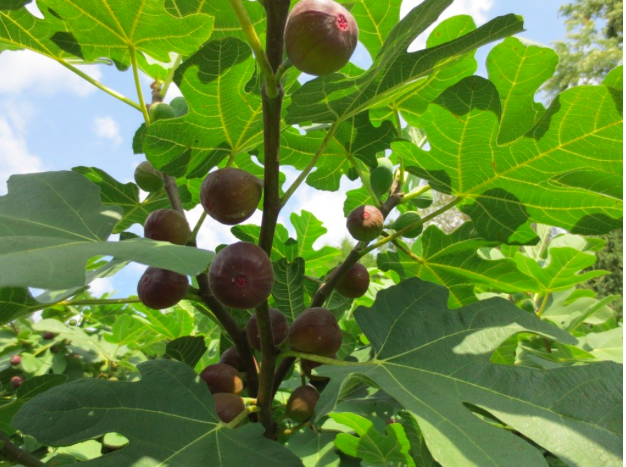
I was excited to reconnect with my subject. At the age of eight, my daughter has already outgrown the playground at WNYC Transmitter Park (fondly known as “Transmitter Park”); she no longer favors coming here as often as she used to. I work at a building two blocks from the park, so I visit often, mostly during my midday breaks to look at the water from the pier, where I sometimes like to have my lunch, rather far from the playground and the garden where it grows. I hadn’t seen the tree in years, and had almost forgotten about it. Out of sight, out of mind, I guess. But it all came back to me the moment Susan Anderson, here at Go Green Brooklyn, suggested it as a subject for a tree series: the large leaves, the green fruit ripening on its branches, the inviting shade. I couldn’t wait to see how much it had changed since the last time I saw it.
After chaining my bike, I walked down the path that cuts across the garden leading to the park. I stopped near the end, just past the bushes and tall grasses. There was a tall, impressive oak and three glowing, young trees: a holly, a crabapple, and one I couldn’t identify. No fig tree.
It should have been right there, a few steps from the fence that separates the ship-shaped sprinkler area of the playground, almost on the east edge of the park. I stepped off the path and looked around the ground for signs of a little shrine that I seemed to recall. It was also gone. For the sake of thoroughness, I looked all over the park, all the way down to the willows in the northwest corner of the park. Perhaps my recollection was off or the tree had been moved somewhere else. But the fig was nowhere to be found.
“It’s been gone for a while,” Ana told me later that day. I was a little surprised that she had never mentioned it – my wife loved that tree. I remember the excitement when she told me a few years back, about picking its ripe fruit by the handful right off the branches. “Those figs were sweet, almíbar puro,” she recalled nostalgically. In her native Asturias, a province in northern Spain, fig trees are a common sight. She wasn’t the only one that used to harvest the fig tree at Transmitter Park. Two Polish women, she recalls, mother and daughter, would fill bags with the fruit while their child played with ours in the playground.
A story published in the fall of 2017 reports a study from the Department of Earth and Environmental Sciences at Columbia. The study confirmed the presence of dangerous levels of lead in at least 52 private yards in our neighborhood. But for a moment, let’s silence the retroactive alarm ringing in the back of my head as I think of my family and neighbors eating fruit from a tree planted on public Greenpoint land. I had a mystery on my hands. A beloved tree had vanished from one of Greenpoint’s most popular parks. And I couldn’t just move on to the next species without figuring out what had happened to it.
Shaper of Culture
Figs were probably the first fruit crop cultivated by our species; fig remains, found in a prehistoric village excavated near Jericho in the West Bank, were at least eleven-millennia old. In an article entitled The Tree That Shaped Human History, published by BBC in January 2017, rainforest ecologist Mike Shahanan suggests that the consumption of figs, a high-energy food, may have helped enlarge the brains of our distant ancestors. “These trees have not only witnessed history,” he asserts; “They have shaped it.”
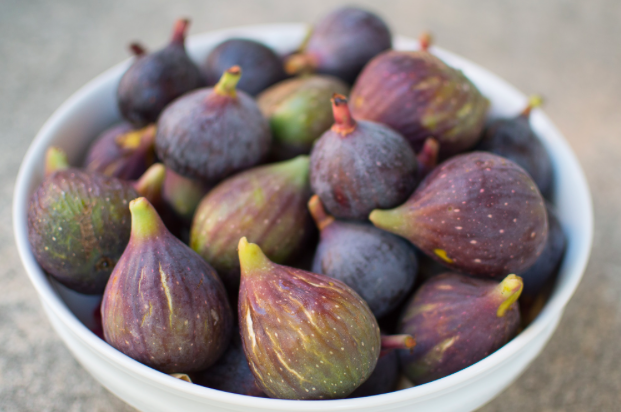
Sycamore figs were found in King Tut’s treasure tomb. Often depicted in Egyptian art, the fig tree plays an important role in ancient Egyptian mythology: Hathor, mistress of foreign lands, goddess of music, fertility and dance, emerged from a Sycamore fig-tree to welcome the dead at the edge of the desert.

Figs also fed the stomachs and minds of ancient Greeks and Romans. For the ancient Greeks, the fig tree was one of the eight hamadryades—one of eight forest nymphs, each presiding over a tree. Syke was her name, and from that name derives the Greek name of the tree she inhabits (ficus carica).
The fig tree appears twice in Ovid’s Fasti. It also plays an interesting part in the story of three constellations. Apollo, who was preparing a feast for Jove, had asked his sacred bird, the crow, to fetch water from the spring in a golden cup. It was a simple enough mission until the crow encountered a fig tree laden with unripe fruit. So strong was the crow’s craving for the taste of ripe figs that he decided to wait below the branches until the fruit was ready. Later in the season, with the golden cup filled with water from the spring and a stomach full of figs, he finally flew back to Apollo, but not before catching a monstrous snake, which he presented to the god as the cause for the delay. Apollo, being a god, knew that the bird was lying, and in a rage, cast all three things to the heavens, bird, cup and snake, where they remain to these days as reminders of the god’s wrath.

Another fig tree is mentioned in the explanation behind the Roman holiday called Lupercalia. It tells about the ficus ruminalis, a wild fig tree that stood on the shores of the Tiber, “in youthful foliage green/of which some vestiges may still be seen” near the future location of Rome. The tree grew on the landing site of a cradle that carried two baby twins: Romulus and Remus, the mythical founders of the ancient capital, later nourished by a she-wolf in a cave not far from the fig.
The fig tree also plays a prominent part in Judeo-Christian cosmology. In the biblical context, the tree offers a gift analogous to that of Prometheus—the taste of its forbidden fruit, like the gift of fire, will makes us God-like. In Michelangelo’s The Fall of Man, the tree of the Knowledge of Good and Evil that grew in the center of Eden is depicted as a fig. Moreover, the loincloths worn by Adam and Eve after tasting the fruit are described in Genesis as fig leaves sewn together.
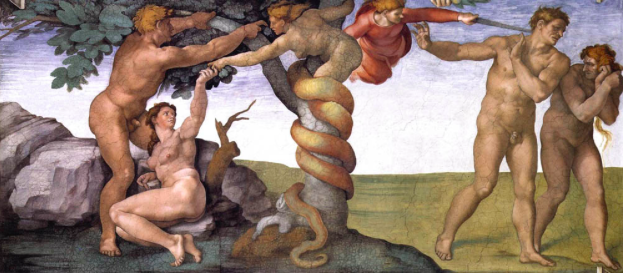
The fig plays an equally essential role in Eastern religions. The shade of a Bodhi Tree, an actual fig tree of the species ficus religiosa that grows in the town of Bodh Gaya, India, is believed to be the place where Siddhartha Gautama, the Buddha, attained enlightenment after meditating for seven weeks. Hindus also revere this species, also known as ashvattha or the Sacred Tree, a name that is also associated to Shiva and Vishnu: destruction and preservation both contained in the same cosmic tree.
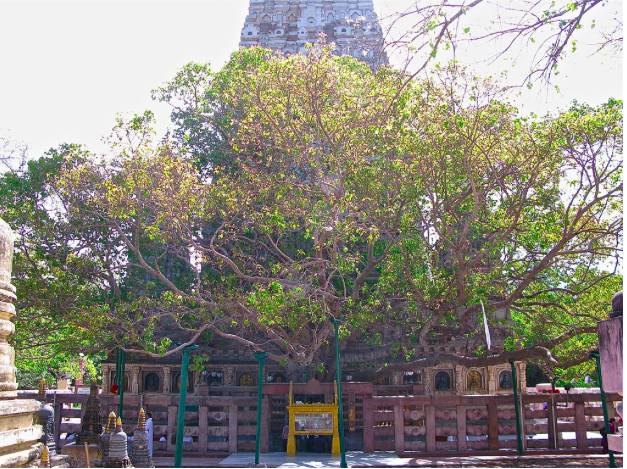
Figs and fig trees are also a recurring motif in modern literary works. Figs represent life’s many possibilities in the heavily quoted paragraph from Sylvia Plath’s The Bell Jar, where the quick perishability of the fruit illustrates the ephemeral quality of human life. The poetry of Miguel Hernández utilizes the fig tree as a recurring metaphor that embodies the switching emotional landscape of the poet. Figs are also a fixture in the hills of his native province of Alicante, Spain. In fact, the earliest inspiration for the most sensuous lines in his odes and the most hopeful ones in his elegies still grows, protected in the patio at the poet’s childhood home. Classic twentieth-century modernist Francis Picabia featured the fig leave in the famously provocative work with the same title, considered by many an attack on the censorship forces of the conservative art establishment of his time. Salvador Dalí, a former Dadaist—also not a stranger to controversy— includes figs in his haunting composition Invisible Afghan with the Apparition on the Beach of García Lorca in the Form of a Fruit Dish with Three Figs.
Several volumes can be filled with references to the fig tree in cosmologies and art manifestations from around the world, but we will stop here. This little diversion may help explain the little shrine that I recalled at the feet of the Transmitter fig tree. It also puts in perspective all that we lose with the loss of a tree.
Unexpected Savior
I spoke to Katie Naplatarski, a member of Friends of Transmitter Park, a volunteer group dedicated to the protection of this park, to inquire about the lost fig tree. I learned that the original plans for Transmitter Park did not include the fig tree. The community had begged to save the fig tree which, I was surprised to learn, was not originally in the location that I mentioned above. The tree was originally planted on the lawn, closer to the south wall of the old transmitter house. However, NYC Department of Parks and Recreation (“NYC Parks”) categorically refused the petition because they did not (and still do not) want trees with edible fruit in city parks for liability reasons. The tree was on the chopping block.
On August 3rd, 2010, during the groundbreaking ceremony for Transmitter Park, Katie and other community members appealed directly to the then NYC Parks Commissioner, Adrian Benepe, who was there to mark the occasion. It was a Hail Mary move. “We told him about the fig tree,” explains Katie, “and he just motioned for the Head of Construction to come over and said, ‘Hey, you see that fig tree over there? Make sure you save that fig tree.’” And just like that, the tree was saved. It was moved closer to the north end of the park, next to the wall of a building now gone, a little out of the way in the location familiar to my wife and other park goers.

Usual Suspects
Katie thinks it might have been the harsh winter of 2015 that killed the tree. The mean temperature was 2.7 degrees below normal that January and the snowfall more than doubled that month’s average. NYC Parks ended up removing tree from the grounds of Transmitter. “It looked like it might have come back,” explains Katie, “but maybe they didn’t want people sleeping there or something, so when they cleared it out back there, they removed it.”
Manuel Zuniga, another Greenpoint resident, shared additional insights. “Originally there were two fig trees,” he explained. “One was by the willow tree, near the water. The other one was here, next to the transmitter house.”
Manuel paints a sort of idyllic picture of Transmitter Park before its construction, when it was off limits to the general public. Truckers and other crew from Parks would hold cookouts there when the weather allowed it. He told me about growing all kinds of vegetables where the lawn is now: watermelon, cucumber, eggplant. He recalls with a grin how sometimes they would find big holes made by foraging rats across several watermelons. And he remembers the sweetness of those figs.
I looked at the mist floating over the lawn, trying to picture the post-Industrial bucolic scene. Manuel, who moved here from Queens before the dawn of the age of gentrification and has been an intimate witness of the transformation of the park, only had to retrieve the memory from his mind.
The fig tree by the willow, the one he preferred to harvest back then, was gone before the construction of the park, but Manuel continued to enjoy the bounty of the second tree, the ‘saved’ one, until it was removed. “It was Sandy,” he believes. “The water was up to here,” he shows me with his hand about three feet above ground. I tell him about the winter of 2015. “It would have come back if it weren’t for the damage from all that water.” Manuel is certain it wasn’t the cold—he was convinced that the Transmitter fig tree was a specimen of a hardy variety: the blanche, or white Russian fig (ficus carica).
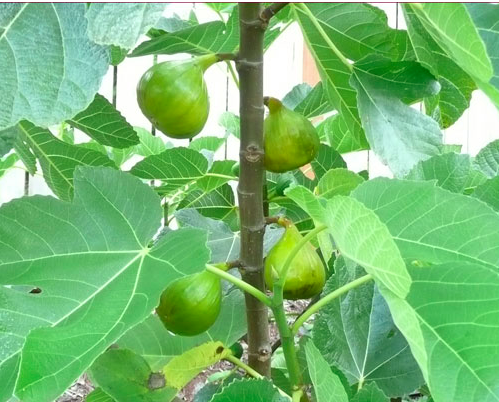
Perhaps there is no point in finding a culprit for the death of the Transmitter fig. Trees die of many assorted natural causes. But we, humans, are changing nature faster than ever.
I do believe that it is time for fig trees to take back their space in public Greenpoint parkland. Wouldn’t a warning sign about eating the figs, like the ones about consuming fish caught in the East River, be sufficient to avoid liability issues? For now, I am thankful for the memories of the one tree that we had here in Transmitter Park and the opportunity to connect with a species that has nurtured and shaped humanity from its earliest beginnings.
Want to learn more about Greenpoint Trees, or even plant your own? Check out the Greenpoint Tree Giveaway, September 29!


